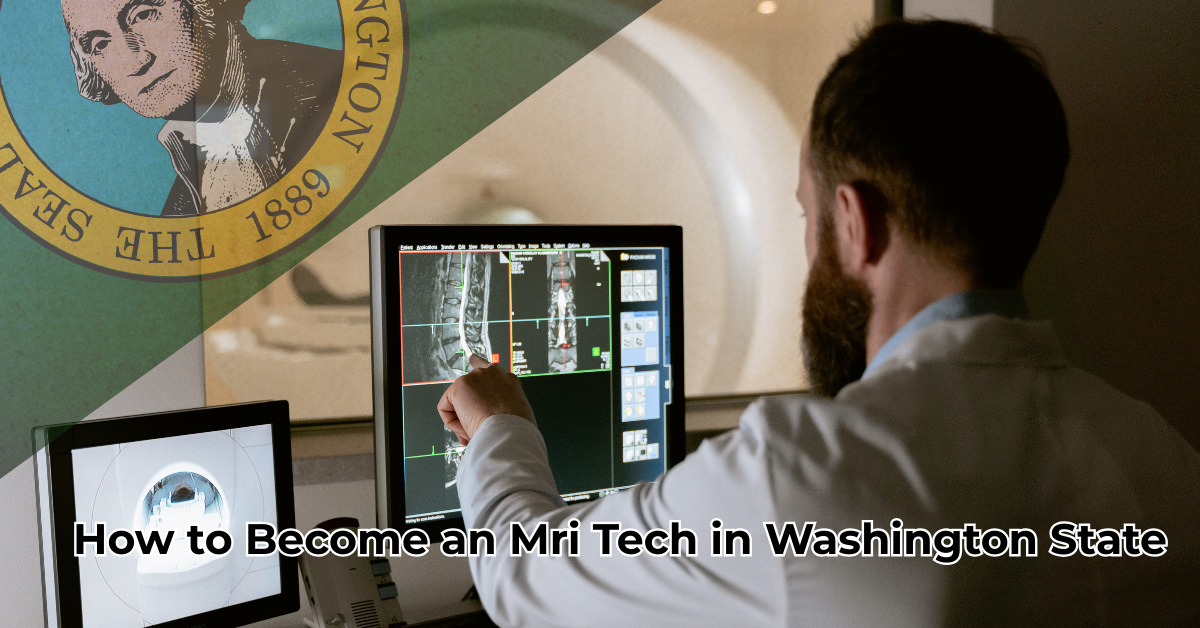One of the most sophisticated applications of modern medicine is Magnetic Resonance Imaging (MRI) technology, which enables physicians to diagnose diseases more accurately and in detail. There is a qualified technologist behind any MRI scan to operate the device and protect the patients.
The number of MRI technologists is rapidly increasing in Washington State owing to increasing healthcare services and an aging population. This career has not only provided steadiness and a great salary, but also provides the gratification of helping change the lives of patients.
Washington has good educational programs, good career opportunities and a good professional environment in case you are thinking about this route.
Understanding the Role of an MRI Technologist
Before you begin the journey, it’s important to know exactly what an MRI technologist does. These professionals operate MRI machines to capture images of the body’s internal structures, which doctors use to detect and treat medical conditions.
A typical day includes preparing patients for scans, explaining procedures, positioning them correctly, and ensuring high-quality imaging results.
Beyond technical skills, MRI technologists must be compassionate communicators since many patients feel nervous or claustrophobic during scans. They also need strong problem-solving skills to adjust imaging techniques based on the patient’s condition.
In Washington, MRI techs often work in hospitals, outpatient imaging centres, and specialized diagnostic clinics, contributing directly to patient care and medical decision-making.
Education Requirements for MRI Techs in Washington
The first step to becoming an MRI technologist in Washington is getting the right education. At minimum, you’ll need a high school diploma or GED, with strong foundations in math, biology, and physics. From there, most students enrol in an accredited MRI technology program or a radiologic technology program with an MRI specialization.
Washington has programs provided by community colleges, universities, and special training schools. These programs can last between 18 months to 2 years, depending on the certificate, associate degree or bachelor’s degree course you are pursuing.
Anatomy, patient care, medical ethics, and advanced imaging techniques are usually covered in coursework. The reason why it is important to select an accredited program is that it gets you ready to take the certification exams, and it also makes sure your education is up to state standards.
Certification and Licensing Process in Washington State
After completing your education, the next step is earning certification and a state license. Most employers in Washington require MRI technologists to be certified through the American Registry of Radiologic Technologists (ARRT). To qualify, you’ll need to graduate from an accredited program, apply for the ARRT exam, and pass with a satisfactory score.
Along with the national certification, the state of Washington also demands that technologists have a state license in order to practice. This is done by providing evidence of your certification by ARRT, an application to the Washington State Department of Health and payment of the necessary fees. To keep your license up to date and keep your skills and knowledge up to date in this rapidly changing profession, you need to keep up with continuing education.
Clinical Training and Hands-On Experience
Textbooks and lectures provide a foundation, but real expertise comes from hands-on training. Clinical rotations are built into most MRI programs in Washington, giving students the chance to work in hospitals, diagnostic centres, and outpatient clinics under professional supervision.
During clinical training, you’ll learn how to position patients, adjust MRI machines, and troubleshoot common issues that arise during imaging. Just as importantly, you’ll gain valuable experience in patient communication—helping people feel safe and comfortable during what can be an intimidating process. These rotations also give you a foot in the door, as many students build relationships with healthcare facilities that later lead to job opportunities.
Career Path and Job Opportunities in Washington
When the time to enter the workforce comes, you have finished your education, certification and training. MRI technologists have many opportunities in Washington, and the demand continues to grow in the state.
Large teams of imaging specialists work in major hospitals in cities such as Seattle, Spokane and Tacoma and smaller community hospitals, as well as individual diagnostic centres, are also seeking talented individuals.
There are high career prospects. Industry data indicates that MRI technologists in Washington have a higher median salary than the national median, with entry-level jobs beginning at an average of about $65,000 a year and experienced jobs commonly over $90,000/year.

In addition to the salary, many MRI technologists enjoy job security and flexible work arrangements, whether full-time at a hospital or part-time at an outpatient imaging facility.
Individuals wishing to progress can also specialize further- into higher imaging fields, imaging departmental supervision, or even into education as a way of training the next generation of MRI techs.
Continuing Education and Professional Development
Becoming an MRI technologist doesn’t stop once you land your first job. Both the ARRT and the Washington State Department of Health require continuing education to maintain certification and licensure.
This usually means completing a set number of education credits every two years, which ensures that technologists remain up to date with the latest technology, safety standards, and imaging practices.
Continuing education can be completed through workshops, online courses, seminars, or professional conferences. Some MRI technologists also choose to pursue additional certifications in areas like cardiac MRI, breast imaging, or CT scanning, which can boost career opportunities and salary potential.
Joining professional associations—such as the Washington Society of Radiologic Technologists—can provide networking, mentorship, and access to valuable learning resources.
Conclusion: Taking the First Step Toward Your MRI Tech Career
Starting a career as an MRI technologist in Washington may seem like a big journey, but it’s one filled with opportunities and rewards. From gaining the right education to earning certification, completing hands-on training, and stepping into a stable career, every step brings you closer to making a real impact in healthcare.
If you’re passionate about helping people and have an interest in medical technology, now is the perfect time to begin. Explore accredited programs near you, research certification requirements, and take the first step with confidence. A fulfilling career as an MRI tech in Washington State is waiting for you.
FAQs
How long does it take to become an MRI tech in Washington state?
It typically takes 2 to 4 years, depending on the program you choose. An associate’s degree usually takes about 2 years, while a bachelor’s degree may take 4. Additional time may be needed for certification and licensing.
How much do MRI techs make in Washington state?
On average, MRI technologists in Washington earn between $65,000 and $90,000 per year. Entry-level salaries start lower, while experienced technologists or those in large hospitals often earn more. Pay also varies by city and employer.
How fast can you become an MRI tech?
The fastest path is through a certificate or associate degree program, which takes about 18 months to 2 years. This allows you to start working sooner, provided you also pass your certification exams.
How to be a radiology tech in Washington state?
You’ll need to complete an accredited radiologic technology program, earn ARRT certification, and then apply for a Washington State license. Once licensed, you can work in hospitals, clinics, or imaging centres.

